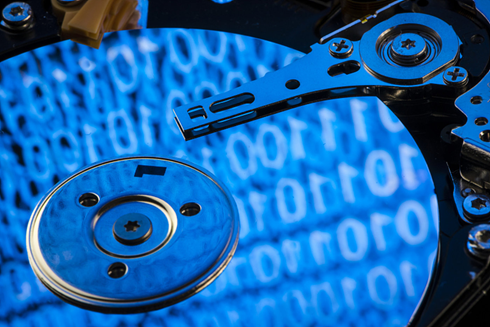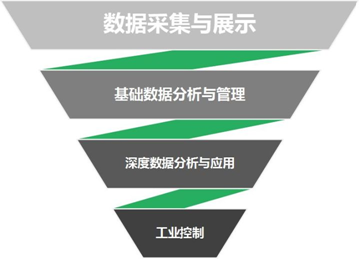When the Industrial Internet of Things meets 5G 当工业物联网遇上5G HaizhurenWebsite: From the Internet Sohu Image Source @视觉中国文|Vice President of Broadband Capital Song Pengfei 2019-04-29 海珠人网站:源自网络 搜狐 图片来源@视觉中国文|宽带资本副总裁 宋鹏飞2019-04-29
first section (1) 第一部份 
TheMinistry of Internal Affairs and Communications of Japan launched a popularshort film "Connecting the World after 5G" this year. In more thanthree minutes, the short film intensively presented 5G support for ultra highdefinition video, autopilot, telemedicine, smart retail, instant translation,AR / VR and other application scenarios. Although people are no longer familiarwith these concepts, with the 5G blessing, it seems that the dream is closer toreality. It isworth noting that the consumer-oriented domain is only part of the 5Gempowerment. The greater value of 5G will play in the industrial sector that isnot very popular with the public. In fact, on December 1 last year, South Korealaunched the world's first 5G commercial service, and the first 5G customers ofthe three major operators were enterprises. Inthis issue of "CBC Insights", Mr. Song Pengfei, Vice President ofBroadband Capital, talked about "Industrial Internet of Things".Combining the case for everyone to analyze the pain points and needs of thecompany, and the 5G application scenarios that fit it. Thearticle focuses on the following topics: 区别 The difference between industrial Internet of Things and consumerInternet of Things 四 Four levels of analysis of industrial IoT applications ❸ 5G's possible impact on the IndustrialInternet of Things ❹ 5G application in industrial internet ofthings Whenthe Industrial Internet of Things meets 5G Forthe average consumer, the concept of 5G may be a higher network speed, and the improvementof the Internet experience brought by the 5G large bandwidth is the mostintuitive, and the mobile phone can watch the higher definition video in realtime. Thelower latency and higher reliability improve the experience of the C-end users,which is relatively small. The delay of opening the webpage is reduced from50ms to 10ms, and consumers are basically not aware of the difference. In theindustrial sector, the situation is completely different. Many years ago, theconcept of industrial Internet was proposed, but until the mobile Internet isso popular, the proportion of equipment networking in the industrial field isstill very small, and the applications involved in networking equipment arestill very shallow. The main reason is that the Internet currently does notmeet the requirements for delay and reliability. Internetof Things border TheInternet of Things is a large and general concept. From the perspective oflarge application areas, it can be divided into consumer Internet of Things andindustrial Internet of Things. Thesetwo types of requirements for the performance of the Internet of Things arevery different. The consumer Internet of Things is relatively large, such aswearable devices, sharing economy, smart home, etc. These scenarios are closelyrelated to the lives of consumers, connected to GPRS, WiFi and Bluetooth.Mainly based on the main performance requirements are low power consumption. Smarthome is an area that has recently developed rapidly. On the one hand, thetechnological advancement in the interactive field brings about the improvementof the voice interactive experience, and on the other hand, the cost of theconnection module in the industry chain is reduced, so that it is feasible toconnect and control a large number of electrical appliances in the home withthe speaker as an entrance, and It has produced leading businesses or companiesin the industry like Xiaomi IoT, Graffiti, and Lexin. But inthe field of industrial Internet of Things, the situation is different.Industry verticals have different industry characteristics, high knowledgebarriers, and industrial manufacturing processes have high requirements forreliability and stability. It is difficult for current carrier networks to meetthe performance requirements of industrial Internet of Things. Therefore, theprogress of the Internet of Things in the industrial field has been slow, andthere has not been a relatively mature business model and a relatively largenumber of companies. Thestatus quo of industrial internet of things Theindustrial sector includes many vertical industries. The larger industriesinclude manufacturing, transportation, energy, construction, and mining. Thecharacteristics of each industry vary greatly. The combination of the Internetof Things and each industry must also be based on the industry itself. Featuresto adjust. If weabstract the application of the Internet of Things in the industry, we cansummarize it into four levels: data collection and display, basic data analysisand management, deep data analysis and application, and industrial control. Basedon the depth of the business processes involved, these four levels summarizethe current application and value of the Industrial Internet of Things fromshallow to deep. The shallower the application, the less business processesinvolved, the more versatile, the more the application areas wide. 
1,data collection and display Themain purpose is to transmit the data information collected on the sensors ofthe industrial equipment to the cloud platform, and present the data in avisual manner. Mostof today's industrial equipment, such as CNC machine tools, wind turbines,industrial vehicles, etc., have a large number of sensors themselves, andprovide a centralized data interface, only a small number of old equipment, orhave special data requirements scenarios, need Sensor and data acquisitiondevices are added separately. Interms of data transmission, the equipment in the factory has a complicatedenvironment. Generally, the machine tool is connected to the centralized dataprocessing device by using the network cable, and then connected to the cloudplatform through 4G or fixed network; equipment outside the factory, such asindustrial vehicles, Data acquisition and transmission are completed by aterminal with a built-in 4G communication module. Thedifficulty of the data collection service is that the device data protocol isadapted and compatible when faced with a large number of different types ofindustrial equipment. The final data visualization is the core requirement ofthe customer. The state of the network device can be monitored through aunified platform, which facilitates timely understanding of device abnormalinformation and improves management efficiency. 2.Basic data analysis and management Basedon the device data collected by the cloud platform, basic data analysis isperformed, and some SaaS applications are generated, such as alarms forabnormal device performance indicators, fault code query, and correlationanalysis of fault causes. Thislayer of data analysis also favors the stage of general analysis tools, anddoes not involve data analysis based on vertical domain knowledge. Based on theresults of these data analysis, there will be some general device managementfunctions, such as device switching, adjustment Status, remote lock and unlock,etc. These management applications vary according to the specific needs of thefield. 3.Deep data analysis and application In-depthdata analysis involves industry knowledge in specific areas and requiresindustry experts in specific fields to implement data analysis models based onthe domain and characteristics of the equipment. Atpresent, many applications are in the field of fault prediction. Fault predictionof large-scale industrial equipment has always been difficult to solve. Forexample, machine tools, fans, etc., once a large fault occurs, the impact andsubsequent repair costs are enormous. Collecting data in real time andpredicting equipment failures can significantly reduce the impact of equipmentfailures. On thebasis of a large amount of data, using machine learning, combined with theknowledge of industry experts, can produce deep industrial applications, suchas improving manufacturing processes, optimizing manufacturing processes, etc.,can improve the efficiency of industrial equipment use. 4.Industrial control Thepurpose of the Industrial Internet of Things is to enable precise control ofindustrial processes. Basedon the process of collecting, displaying, modeling, analyzing, and applying theaforementioned sensor data, the decision is formed in the cloud, and convertedinto control commands that can be understood by the industrial equipment, andthe industrial equipment is operated to realize accurate information betweenthe industrial equipment resources. Interaction and efficient collaboration. Theindustrial control systems of most current scenarios also need to be deployedlocally, limited by communication technology and processing power. The depth ofindustrial cloud platform involving industrial control is not enough. 5Gtechnology can meet the requirements of industrial systems for communicationcapabilities and achieve industrial control goals. IndustrialIoT Application Case 
Please continue to see the second part (2)
请大 家继续看第二部份
|